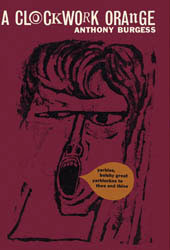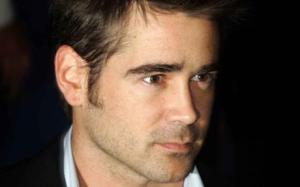“The Irish accent has
beaten its French
counterpart
as the world’s sexiest.”
~The Telegraph (British newspaper)
I was so immersed in the story of Liam Garrity, Dinny Meehan and the White Hand Gang, that my personal life was suffering. I was missing appointments, forgetting important topics at work and lost in thought among the demands of everyday life. The first draft ofLight of the Diddicoy was complete, but it lacked the immersion I felt within my imagination. What existed in my mind didn’t come through well enough on paper. The complete and overwhelming realities of the life of a 14 year-old farm boy from Ireland suddenly thrust into the rough-cobbled neighborhoods of Brooklyn’s waterfront gangs was missing the link that brings together a writer’s imagination and the reader’s perception of the story.
What I needed was something tangible that would bring the reader directly into the tensions Liam, the immigrant protagonist faced while forced to work as a longshoreman, then going homeless, being brought into a gang where fist-fighting was a measure of one’s worth and the terrible decision between family and survival.
As all writers do, I consulted some of the greatest works that did to me what I wanted to do for my readers. Bring her/him into a life where decision-making was entirely influenced by survival. A young Irishman in the big American city.
There are many works that influenced the voice of Liam Garrity in Light of the Diddicoy, but in the end I needed to come up with my own voice for him. And after the first edit of the rough draft, I was keenly aware that I’d really only put together a written outline of the story at that point. It was filled with information that was not essential to the flow of the story. The most important part was yet to come: The Voice.
I decided to strip down the informational aspects of the story, what I called the “explanation” of it, and replace it only with direct “experiences.” I even named the edit, “X-for-X.”
That was the first part of the edit, which left out some details of the characters’ backgrounds and a better understanding of the background of the gang, but with two other books (it’s a trilogy, remember) and with loads of “experiences” still in store for young Liam, I felt safe that eventually they’ll get covered.
The next part was something I’ve always been interested in. My entire life I have been fascinated with accents, dialects, speech impediments and the sentence structure of those who speak my first language, as their second language: English.
Although many books influenced Light of the Diddicoy (I simply  cannot start naming them all off), I found A Clockwork Orange to be a brilliant story that had an powerful effect on me (I even dressed up like ‘Alexander the Large’ for Halloween one year), due mostly to Anthony Burgess’s amazing ability to put together Russian-inspired words with English street slang and rhyming slang that he called “Nadsat.” The first-person narration made me feel as though I was within the story myself. Although I identified with Alex’s (narrator) mischievous nature, the fact that the language was so new and experimental made me feel like I was actually a part of the story, even though I read it thirty years after its original publication.
cannot start naming them all off), I found A Clockwork Orange to be a brilliant story that had an powerful effect on me (I even dressed up like ‘Alexander the Large’ for Halloween one year), due mostly to Anthony Burgess’s amazing ability to put together Russian-inspired words with English street slang and rhyming slang that he called “Nadsat.” The first-person narration made me feel as though I was within the story myself. Although I identified with Alex’s (narrator) mischievous nature, the fact that the language was so new and experimental made me feel like I was actually a part of the story, even though I read it thirty years after its original publication.
Other books and stories that experimented with language also electrified my imagination. But, wanting to keep the story of Liam as the universal struggle of the immigrant, particularly the Irish immigrant, I decided to study the Irish language. Then I narrowed it down again to Hiberno-English, and then pared it down again to the Hiberno-English of the nineteen-teens.
There are all kinds of derivative accents and dialects in Light of the Diddicoy including the Brooklyn accent as opposed to the other New York borough accents, a Kilkenny dialect (Paddy Keenan), Irish-traveler’s (Tommy Tuohey), a Dubliner’s (Patrolman Brosnan) and even Cockney-Irish (Sadie Meehan) and a Jewish-German (Abe Harms) accent. But the most important dialect is the storyteller himself, Liam Garrity, who grew up on a farm inCounty Clare and lived in Brooklyn the rest of his long life.
Hiberno-English, of course, is the language of a country that had learned a foreigner’s tongue due to conquest. Strict respect to English grammatical rules was not a priority, though many of the grammatical rules of Irish-Gaelic often apply to an Irish person’s use of the English language.
I won’t go into great detail of the idiosyncrasies and syntax of Hiberno-English, but some of the most easily recognizable traits are fun to look at. One of the first things I learned that made me both laugh and think about why I had never noticed it before, was the fact that the Irish rarely ever use the word “yes” or “no” in English. There simply were not words for these two opposing adverbs in Irish. Therefore, you’ll find when an Irish person is asked a simple yes-or-no question, like:
“Are you fond of apples?” He or she may reply simply, “I am.”
“Do you hate Americans?” You might ask her/him.
“I don’t, but the Brits can go feck themselves altogedder.”
Which brings me to another fun point, reflexive pronouns such as “herself” and “himself” within the Irish vernacular. You can see it in this example of one girl asking another if she went somewhere, with a hint of jealousy behind it.
“Did you bring yourself to the show then?”
Instead of those from England or the United States who might ask, “Did you get to go?” (because I couldn’t go).
The use of a reflexive pronoun here indicates an influence from the Irish-Gaelic grammar.
And of course, you have ’tis.
“Beatiful day ’tisn’t.”
“’tis, ’tis.”

Colin Farrell, right, whose Irish accent and handsome face make him one of the sexiest men in the world. He might do well as Dinny Meehan too in a film adaptation, I’d think.
The lilt, or brogue of the Irish is the accent that is so recognizable. It was recently voted in a poll of over 5,000 women worldwide to be the sexiest (I had to pull the quote above from an British newspaper for good measure).
This is no surprise. Americans and the world-over love everything Irish. Especially the beer and whiskey on St. Patrick’s Day, which is when Liam Garrity and his West of Ireland dialect makes his big debut as the narrator in the first book of the Auld Irishtown trilogy, Light of the Diddicoy.
You need to be a member of The Wild Geese to add comments!
Join The Wild Geese